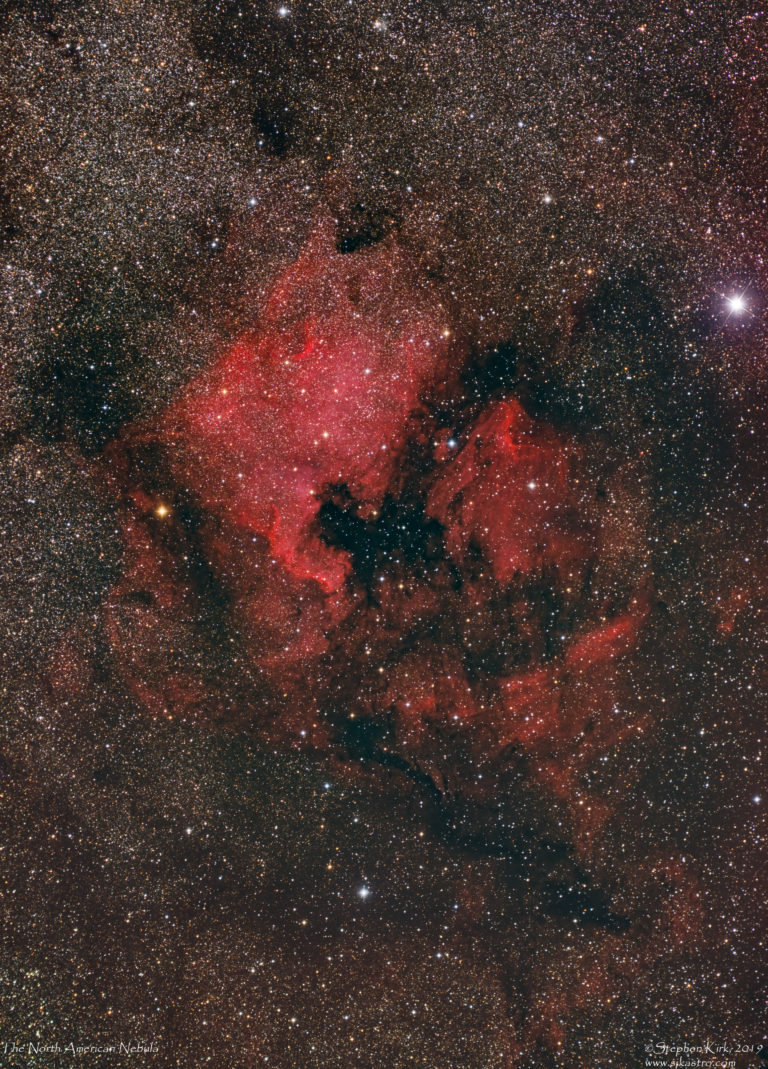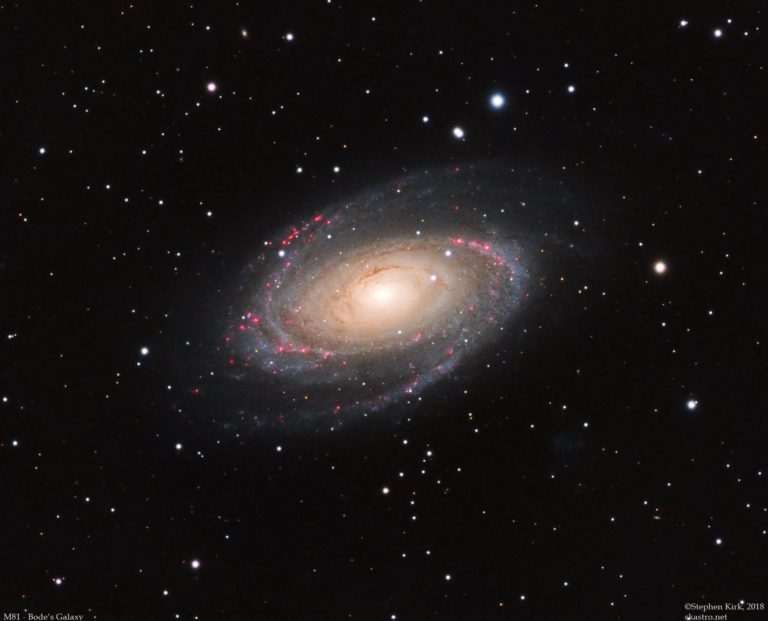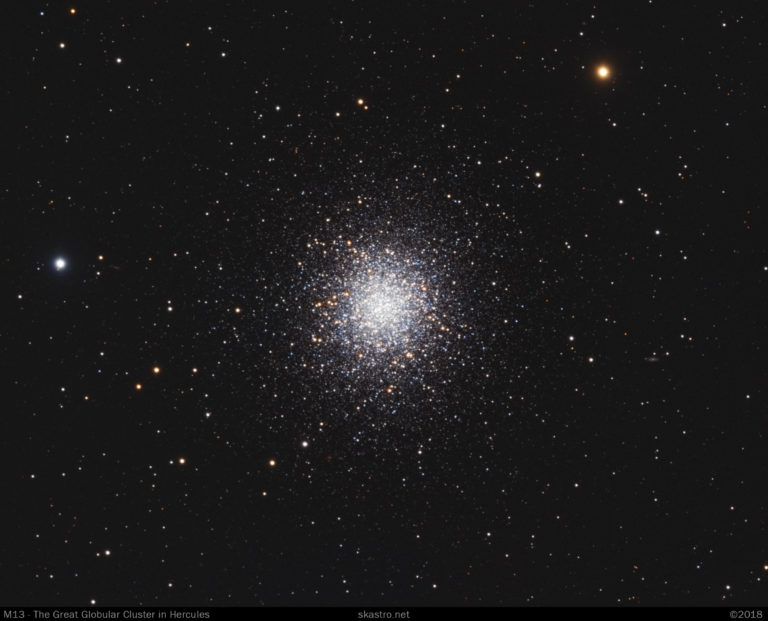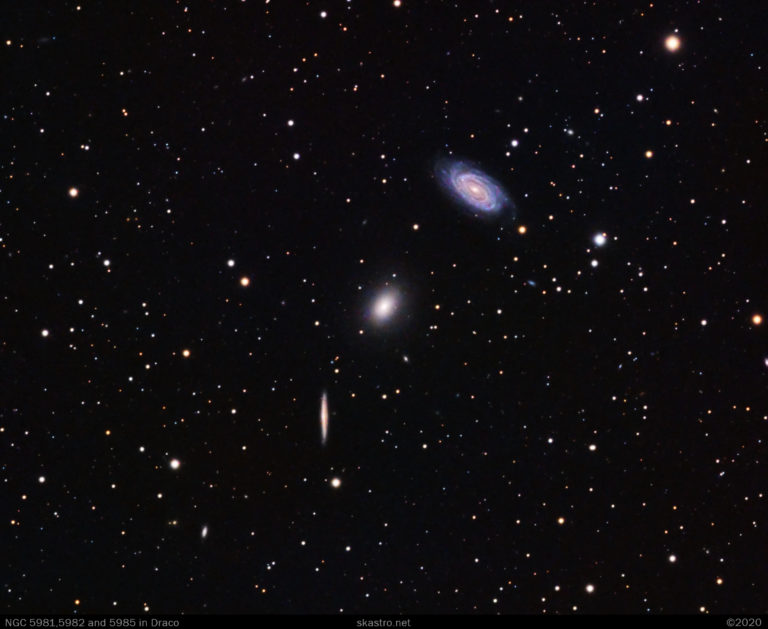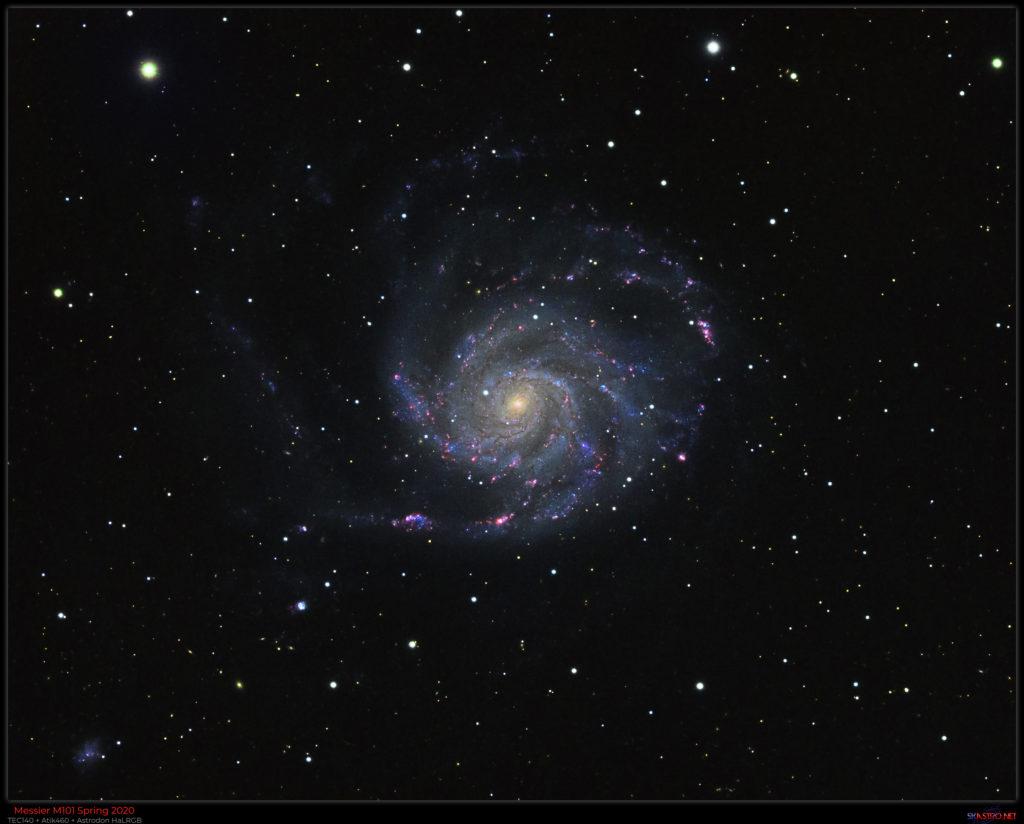Hydrogen Alpha North American and Pelican Nebulae Above is 120 minutes worth of Hydrogen Alpha data captured in five minute exposures with an Astrodon Ha 3nm filter and a Samyang 135mm camera lens on a Moravian Instruments G2-8300 CCD camera. RGB data I then captured one hour in each of the Astrodon R,G and B filters with the same rig as detailed for the Ha image, again in five minute exposures. However, use of the superb Astrodon E series RGB filters produce a nice image and the colours are brought out quite nicely although it lacks a bit of punch and vibrancy. The bright star to the right is Deneb. HaRGB image In Photoshop I broke out the red channel and then blended it as a 50:50 mix with the Ha image (at the top of this page) before recombining back into RGB. I also saved a copy of this…
M81 in Ursa Major M81 is a face on spiral galaxy in the constellation of Ursa Major and it (and nearby M82) are the most northerly of the Messier objects. It is easily visible in binoculars as a faint smudge. Its open spiral arms and red HII star forming regions make it a popular target for amateur and professional astronomers alike. In this picture note at the four o’clock position the very faint satellite galaxy Holmberg II. It is located about 12 million light years away, placing it outside of the local group and it is steadily receding from us. I have imaged M81 in several settings. This picture was taken with my TEC140 refractor and Atik 460 CCD camera with Baader LRGBHa filters. It contains five hours of luminance of 900s exposure, two hours of Ha data and 90 minutes in each of RGB to give a total integration…
M13 is arguably the greatest of the Northern hemisphere globular clusters and, after Omega Centauri, the greatest globular cluster in the sky. It is a located about 26000 light years away and has a diameter of about 120 light years. It is one of about 250 globular clusters that surround the nucleus of our galaxy. Most galaxies have globular clusters in orbit around them and the reason why is still unclear. What is clear is that the clusters and the stars within them are extremely old, in the region of ten billion years old or twice the age of the sun. M13 is visible with the naked eye on a dark night as a fuzzy star. A telescope reveals its starry nature and a scope over 8 inches will show many stars and is an amazing site to behold. M13 – The Great Globular Cluster in Hercules The above image…
The Draco Trio The Draco Trio is a group of three galaxies in the constellation of Draco, The Dragon. They are located about 120-130 million light years away. This image was captured over the winter 2019-2020. I used my TEC140 refractor with Atik 460 CCD and Astrodon LRGB filters. The luminance is four hours of 15 minute exposures binned 1×1 and the RGB one hour in each filter binned 2×2. Mount is MESU200 guided with OAG with a QHY5. Draco Trio Annotated Draco Trio Inverted
M101 completed LRGBHa Image M101 – The Pinwheel Galaxy – is a spectacular, face-on “Grand Design” spiral galaxy located about 20 million light years away. It is quite a hard object to observe visually unless your skies are dark due to the galaxy’s very low surface brightness. In the image below you can see the many red HII (pronounced “H-two”) star forming regions. The galaxy is not a part of the local group of galaxies and is receding away from us with the expansion of the universe. The Spectacular M101 Spiral Galaxy in Ursa Major The image was acquired in my back yard observatory in Nottingham, UK with my TEC140 refractor and Atik 460 CCD camera with LRGBHa Astrodon Filters between 2018 and 2020. I used off-axis guiding to keep the telescope precisely aligned and the whole imaging ensemble was atop my MESU200 mount. M101 is not easily captured from…

